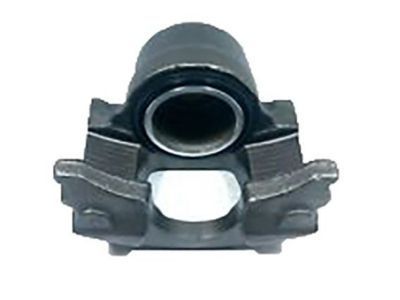

My Garage
My Account
Cart
Genuine Ford Bronco II Brake Caliper
Caliper- Select Vehicle by Model
- Select Vehicle by VIN
Select Vehicle by Model
orMake
Model
Year
Select Vehicle by VIN
For the most accurate results, select vehicle by your VIN (Vehicle Identification Number).
4 Brake Calipers found
Ford Bronco II Brake Caliper
The Brake Caliper in the Ford Bronco II vehicles is responsible for the application of brake force by hydraulically translating pressure received from the master cylinder. This force is necessary for apply the brake pads against the rotors in order to slow down or stop the vehicle. Front and Rear Brake Calipers of Ford Bronco II have fixed as well as floating calipers. In fixed caliper the pistons are placed on either sides of the rotor and therefore apply constant pressure whereas in the floating calipers there is one piston on one side of the rotor and it glides to exert pressure which if not regulated can lead to uneven wear of the rotor. In different years, the Ford Bronco II Brake Calipers have changed and the options are now ranging from basic ones to the performance ones. Caliper introducers are designed to enhance the stopping capacity, and provide a good looking in different performance types. It is therefore important that the Brake Caliper should be inspected and maintained at the right time to avoid such problems like the brake drag or even the uneven pad wear in order to provide the premier performance of the Ford Bronco II.
We provide a wide range of Ford Bronco II Brake Caliper at the best prices possible. If you need Ford Bronco II Brake Caliper, you can shop with confidence on our website. All our OEM parts come with a manufacturer's warranty and are delivered to your door step with a fast delivery service.
Ford Bronco II Brake Caliper Parts Questions & Experts Answers
- Q: How to remove and install brake calipers on Ford Bronco II?A:For brake caliper removal and installation, start off by following the process as outlined in the pad removal procedure, but in addition to it you need to take the brake hose-to-brake caliper retaining bolt and the brass washers are to be discarded and while plugging the brake hose and the brake caliper bolt hole. Check the condition of the brake caliper, piston as well as the rubber seals and replace if there is any defects on them. If the Brake Pads were removed, put them back onto the brake caliper and then follow installation of the brake caliper as described above for brake pad installation, but always use new sealing washers when fitting the hose to the brake caliper. Put a new sealing washer in the brake hose, slide the bolt through the hose fitting, put a second sealing washer, put the hose/bolt to the brake caliper and tighten the bolt to the range of 22-29 ft.lb. After installation let the brake system go through the brake bleeding process to ensure that the brake system is not leaking and is fully operational. If the overhauling of the brake caliper is required, then it should be detached from the vehicle so that it can be placed on the workbench but when blowing with compressed air, one should ensure that fingers are not placed in front of the pistons. Depending on the vehicle, there are two methods to remove the piston: One of them is to use a shop towel or a wooden block to support the piston when blowing compressed air into it, the other is to turn the piston counterclockwise so that it retracts. If the vehicle has an anti-rattle clip, then it should be unscrewed and then using a pry tool, the brake caliper boot and piston seals must be detached from the groove of the brake caliper bore. Twist the brake bleeder valve cap and valve from the brake caliper housing: examine the inside of the brake caliper bores, pistons and the mounting threads for signs of scoring or excessive wear. Remove light corrosion with crocus cloth, remove all dirt from all parts with denatured alcohol and evacuate with compressed air. For assembly of the brake calipers, you are supposed to lubricate and fit the bleeder valve and cap, fit new sealing material into the grooves for brake caliper bore, lubricate the piston bore, fit the pistons and boot in the brake calipers and then push them to the bottom of the bores. There should be use of suitable driving tool to position the boots in the housing and then place the brake caliper in the vehicle after which you fit the wheel and the tire assembly, then lower the vehicle well and then properly bleed the brake system.






